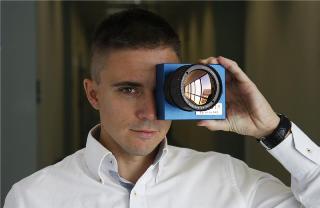Oct 5 2015
A spin-off of the Universidad Carlos III de Madrid (UC3M), Sensia Solutions, has developed a new low-cost infrared camera that makes it possible to quickly and efficiently detect gas leaks that can occur in different industrial facilities.

This company’s invention, supported by the Business Incubator at the UC3M Science Park, is based on technology patented by researchers from the UC3M Infrared Laboratory (initialled LIR in Spanish), and can detect gas leaks that are normally invisible to the human eye thanks to a camera that recognizes the infrared signature of these compounds (infrared is electromagnetic and thermal radiation with longer wavelengths than visible light).
The system, called Gas Sensing System (GSS), makes it possible to visualize a wide range of gases of industrial interest such as methane, natural gas, liquefied petroleum gases, coolants, etc. The benefits of the GSS have been validated through pilot prototypes in different industrial environments like gas treatment stations, regasification plants, steelworks, thermosolar plants, etc. There are several gas-detecting instruments already on the market, but none have the advantages of this new method, according to its creators: working remotely, in real time, intuitively, and at a cost that is five to ten times lower.
The equipment can provide service in any industrial plant where chemical processes are involved and there is a risk of gas leak,” explained Francisco Cortés, CEO of Sensia Solutions. In this regard, they have portable equipment which allows a technician to make periodic inspections, although they can also install a permanent monitoring system in a factory, within a closed-circuit TV that generates automatic alerts when it detects a leak. This feature is very important in explosive gas installations, for example, because the system has an additional unit for early and automatic detection of fire. Lastly, the system can also be placed on drones (unmanned aerial vehicles) to inspect installations from the sky, something that could be very useful for gas pipelines.
The GSS is currently being implemented in industry as a result of the great interest it has aroused among large companies, especially from the oil and gas sector. In addition, for the development of the business plan, Sensia has help from the SME Instrument, part of the European Horizon 2020 program, which has described the project as excellent.
Sensia Solutions is a spin-off of the Infrared Laboratory (initialled LIR in Spanish) at Universidad Carlos III de Madrid. UC3M holds a share in the company, and it has been supported since its inception by the Business Incubator at the UC3M Science Park. This environment, very favorable for state-of-the-art technological development, has hugely aided the processes of knowledge transfer between the university and the business sector.